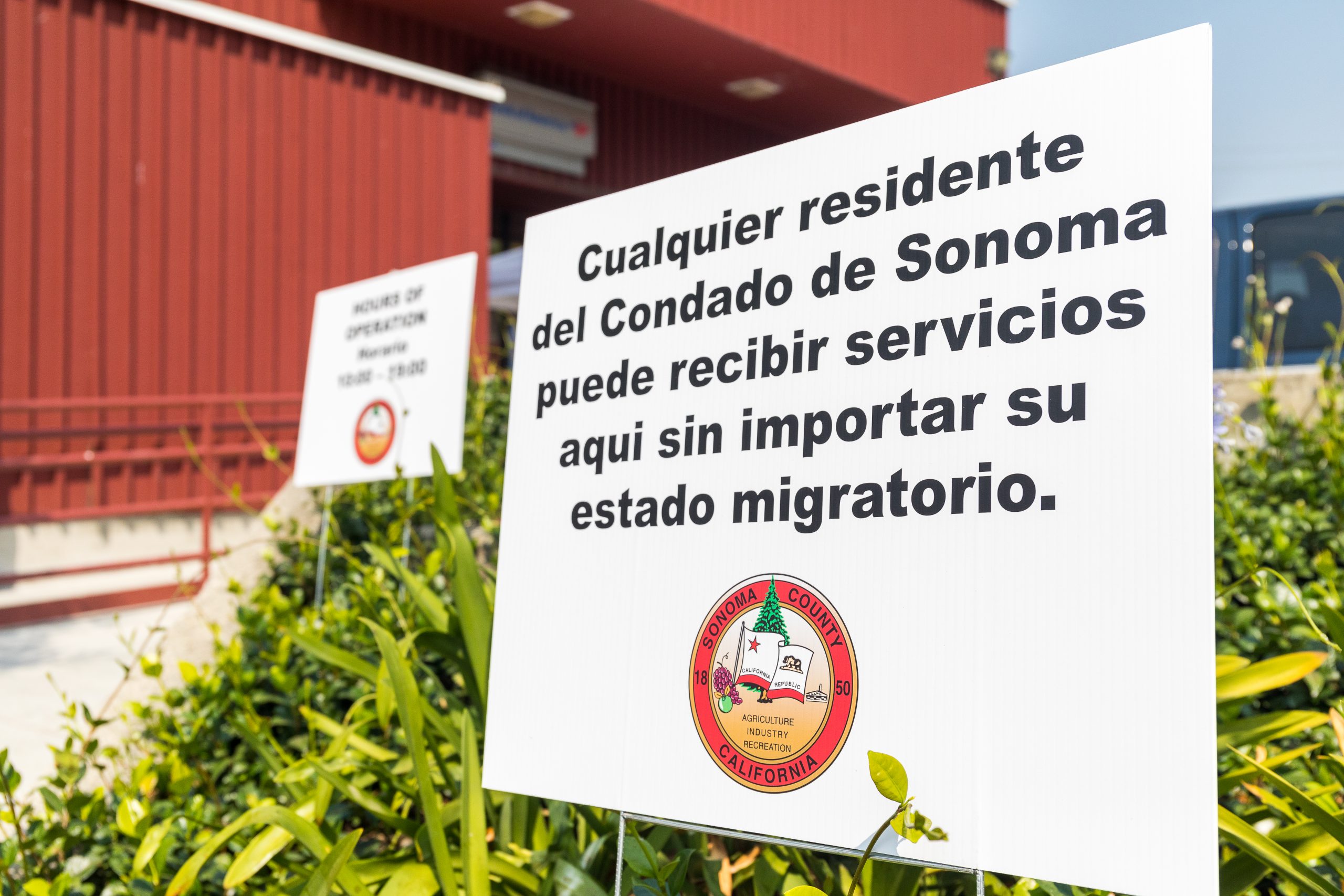The 2017 Sonoma Complex, including the Tubbs and Nuns fires, unmasked and exacerbated the depth and breadth of inequities within our community, especially for non-English speaking residents in Sonoma County.
From gaps in language access for linguistically diverse communities, to shortcomings of emergency alert and warning systems, the county learned there was work to be done. As the different communities in Sonoma County continued their recovery, subsequent natural disasters and the pandemic continued to expose the challenges communities of color face in accessing resources and assistance to ensure equitable recovery. As a government institution, the county learned that it was critical to prioritize these underserved communities to prevent further damage in the mental and physical health of its residents as well as their financial wellbeing.
In December 2017, county staff held a town hall meeting to hear what these communities saw and experienced during the wildfires. County staff learned that those in the Latinx, undocumented, and monolingual Spanish and Indigenous communities did not receive adequate emergency communication, hindering their welfare and safety. Since there was a lack of communication to non-English speakers, many were fearful and did not receive proper instructions for their safety and security.
 Since 2018, the County of Sonoma has taken critical steps to acknowledge and address the need to address and dismantle these inequities. Nationally, data consistently shows that poor people and communities of color disproportionately experience negative impacts of such disasters.
Since 2018, the County of Sonoma has taken critical steps to acknowledge and address the need to address and dismantle these inequities. Nationally, data consistently shows that poor people and communities of color disproportionately experience negative impacts of such disasters.
One of the first steps the county took was to hire a bilingual public information officer to develop and create a link between the Spanish-speaking communities and government services. Around the same time, several county departments joined the Government Alliance on Race and Equity, a national network of government agencies working to achieve racial equity and advance opportunities for all.
In January 2020, the Board of Supervisors included a Racial Equity and Social Justice pillar during the development of its Strategic Plan to address and prioritize the data that show the county’s Latinx and indigenous language-speaking communities are disproportionately impacted by disasters. The inclusion of this pillar came as a result of the work of the staff that went through the Government Alliance on Race and Equity program. The Board of Supervisors approved the creation of the Office of Equity in July 2020, and Alegria De La Cruz was selected as the director in September 2020. The Office of Equity was tasked with carrying out the goals and objectives of the pillar. Part of this work includes assessing the needs, internally and externally, to change culture and to work with the community to find solutions to root causes of the inequities residents are experiencing.
Additionally, the office works to understand and leverage its position as a government agency to change culture and the response to the needs of communities of color. The long-term direction under the Strategic Plan pillar is to achieve racial equity in county service and ensure a work force reflective of the community we serve.
The Office of Equity also partnered with the Department of Emergency Management in the creation of the first Emergency Operations Plan in the state to incorporate cultural competency in March 2022. The Office of Equity led the community involvement process that included the voices and experiences of community advocates who had been asking for culturally responsive improvements to the county’s emergency response.
Just as the 2017 fires disproportionately impacted communities of color, so did the COVID-19 pandemic, and the Office of Equity facilitated the American Rescue Plan Act equity work group to determine areas of funding that support most impacted communities by the pandemic.
Recently the board approved ARPA funds for the Office of Equity to develop plans and recommendations for greater community engagement and language access.
